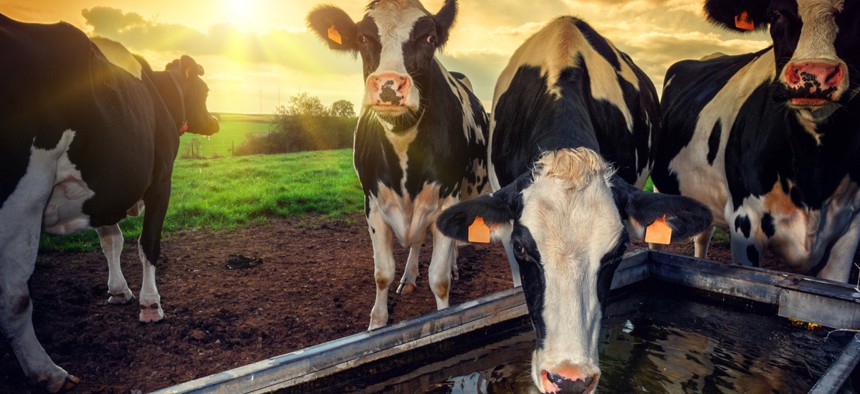Hackathon Participants Use Agriculture Data to Create Real-World Solutions

symbiot/Shutterstock
Can hackers help make farmers’ lives easier? Maybe.
Participants in the 2019 Internet of Things World Conference’s Hackathon used the Agriculture Department’s open datasets to help unearth real-world solutions around water management.
The two-day event challenged eight teams of technical experts and information technology professionals to use USDA’s soil, geospatial and water forecasting data to develop innovative new products that confront issues around water access use and to support the viability of agriculture.
In their solutions, teams were tasked with addressing cybersecurity, the limited use of broadband across rural America and applying machine learning and artificial intelligence models to enhance data-driven decisions.
“Farmers and ranchers are using data from satellites, weather forecasts, sensors, and other technology for more precise agriculture, which is helping to improve agricultural processes on their operation while increasing profits and providing even better protection to the environment,” USDA’s Chief Data Officer Ted Kaouk said in a statement. “Hackathons are a great way to spur innovation and have the potential to solve real issues.”
A discovery interlude ahead of the hackathon provided participants with an inside look at the complex water challenges the department works to confront, as well as a discussion of USDA’s datasets that were used. Agency employees supported the competition by serving as judges and mentors and, leading up to the event, by answering hackers’ questions around USDA’s data and resources using the messaging application, Slack.
“Most participants had an approach in mind and a general goal and needed help with conceptual aspects of interpreting the data,” said Andrew Brown, a soil scientist at the Natural Resources Conservation Service, who also served as a hackathon mentor. “The mentor cadre’s practical experience in agriculture and environmental problems was critical to helping teams keep their solutions in the realm of possibility.”
Team Smart Ag claimed the winning trophy and a monetary prize of $15k.
The team created “a low-cost, low-power smart-farming solution” enabling farmers to install devices to track a multitude of conditions, including water needs for crops and livestock health. To help the nation’s farmers and producers identify runoff water and areas that need the resource, the team also produced a 3D visualization of a hypothetical farm.
“The open-source, conversational artificial intelligence (AI) platform includes a phone application that allows farmers to ask questions, such as, “Where do I need to water today?’” USDA said.
USDA said it’s planning to support additional competitions this year through its Center of Excellence model.
NEXT STORY: DISA, DIU take hits in House defense bill






